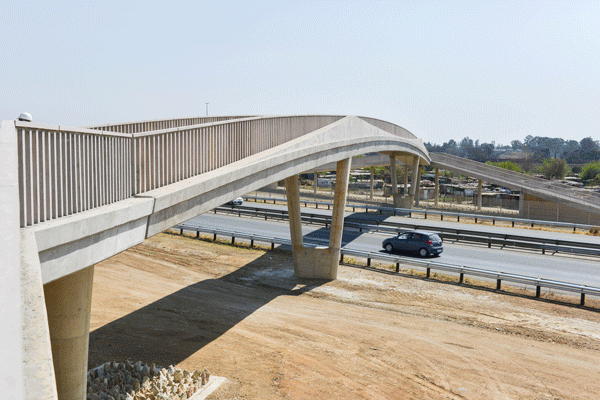SANRAL-facilitated research provides greater understanding of road user behaviour that will be used to increase safety.

Research conducted on the Cape Town freeway network is shining more light on why pedestrians cross busy highways, braving the potential danger of being involved in an accident with fast-moving vehicles, despite the presence of pedestrian bridges.
Coordinated by Professor Marion Sinclair of the University of Stellenbosch’s Department of Civil Engineering and Prof Mark Zuidgeest of the Centre for Transport Studies at the University of Cape Town, the study adds to a greater understanding about pedestrian behaviour and will have an impact on the provision of road infrastructure, traffic law enforcement and education and awareness campaigns targeting specific road user behaviour.
The research was facilitated by the South African National Roads Agency (SOC) Limited (SANRAL), which commissioned the pedestrian count and provided the data for analysis.
CCTV cameras on Cape Town freeways monitor the activities of pedestrians, with up to 30000 pedestrian activities being observed on a regular week day.
Crime and time amongst reasons
SANRAL has built several pedestrian bridges across the roads. Part of the research was aimed at determining whether people make use of these bridges and what can be done to influence their choices.
The study found that time saving and a fear of criminals were among the top reasons why pedestrians decided to cross the road, both in instances where bridges were close by and where they were absent.
Many pedestrians were prepared to take the risk of venturing onto the road rather than becoming victims of crime on, or close to, the bridges.
Among the recommendations are that more pedestrian bridges should be erected, but that they cannot be provided without reliable security systems that ensure the personal safety of pedestrians who use them.
This will require partnerships between road authorities and law enforcement in implementing sustainable solutions.
A good example of this is the deployment of additional CCTV cameras as part of the Freeway Management System, located specifically at known hotspot pedestrian bridges.
These cameras are monitored 24/7 by law enforcement operators on the lookout for suspicious behaviour or potential danger.

